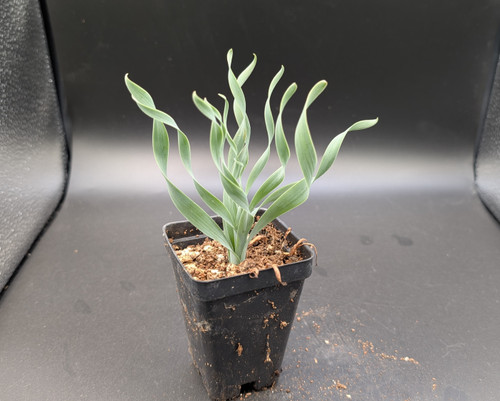Pot Size: 2.5"
Accepted Scientific Name: Ornithogalum concordianum
Origin and Habitat:
Ornithogalum concordianum is native to parts of southern Africa, where it inhabits rocky slopes and open grasslands. These regions experience distinct wet and dry seasons, with rainfall concentrated in the warmer months and long, cool, dry winters. The bulbs are adapted to survive drought by retreating underground when conditions are unfavorable, resprouting with the return of moisture. In its natural environment, the plant grows in well-drained, mineral-rich soils, often in crevices where moisture collects briefly after rains, giving it resilience in cultivation when similar conditions are recreated.
Description:
Ornithogalum concordianum is a small geophytic perennial, typically reaching 4 to 6 inches in height and spreading about 3 to 4 inches across. The plant arises from a small bulb, producing narrow, cork screwed,grass-like leaves. Its star-shaped flowers are borne in a loose cluster, usually white to creamy with greenish mid-veins, creating a delicate but striking contrast. The blossoms open widely in bright light and may close in dull weather, a trait common to the genus. Flowering occurs in late spring to early summer, after which the foliage gradually withers as the bulb enters dormancy.
Cultivation:
Zone: Suitable for USDA Zones 8–10, best grown in pots in colder climates.
Temperature: Thrives between 15–25°C during active growth; can tolerate cooler dormant periods down to 5°C if kept dry.
Growth Rate: Moderate, completing a full seasonal cycle within a few months.
Soil: Requires well-draining soil with pumice to prevent excess moisture around the bulbs.
Watering: Water regularly during the growing season, allowing the soil to dry slightly between waterings. Keep bulbs completely dry in dormancy.
Fertilizing: Apply a balanced liquid fertilizer every 2–3 weeks during the growing season.
Light: Prefers bright light to full sun, which enhances compact growth and flower production.
Pests and Diseases: Generally trouble-free, though bulbs may be susceptible to rot if overwatered. Occasional aphids or mealybugs may appear on leaves or flower stalks.
Propagation:
Propagated by offsets formed around the main bulb or by seed. Offsets can be separated during dormancy and replanted to establish new plants easily.
Image Description:


